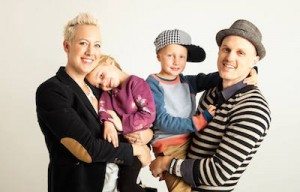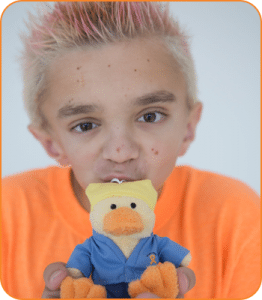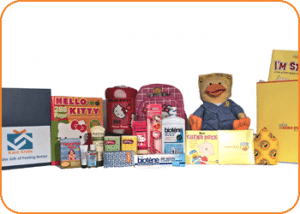THE IMPORTANCE OF NUTRITION IN THE CANCER TREATMENT JOURNEY
What was one of the first things Justin Wilford thought about when his son, Max, was diagnosed with a brain tumor in 2011?
Not just any kind of food – a healing, nutritious cancer-fighting diet. 
“We had an immediate intuition that whatever we did from that day forward, we should include diet as a therapeutic tool for Max,” said Justin. “It took a while for us to find someone who saw the value of whole food and saw it as an anti-cancer therapy.”
“I did a whole lot of research and came across the ketogenic diet, which Max is on right now. What was most striking about the diet was that it was being researched on actual humans and it was proving to have some anti-tumor properties.”
Justin admits getting Max’s oncologist, Victoria Shen, M.D., at Children’s Hospital of Orange County in California, on board was another matter.
“Mainstream oncology does not recognize any diet to have an anti-cancer effect, so Max’s oncologist, Victoria Shen, M.D., was initially skeptical,” he said. “But after diving into the research with me and talking with doctors who administer the ketogenic diet for epilepsy , she became a big supporter.”
Justin said the hours of research, advocating for the diet and compiling his findings was worth it.
“We believe that the diet has kept Max’s tumor stable,” he said. “And we have heard from adult cancer patients using the diet that they have had common responses.”
Max, now 7, underwent 1.5 years of chemotherapy and 30 rounds of radiation. He is not on a formal treatment protocol right now other than the ketogenic diet.
The use of integrative therapies in combination with traditional therapeutic agents is gaining in popularity said Justin, who created the MaxLove Project in late 2011 to provide families with accessible, practical and kid-friendly whole body wellness resources.
The nonprofit organization aims to empower families fighting childhood cancer and life-threatening conditions.
“One of the most important therapies is nutrition, which plays an important role in the whole cancer treatment journey,” he said. “We believe that true health starts when families are empowered to be active partners in their child’s healing.
“It is great that our oncologist is supportive of the diet.”
Shen offers some helpful tips for parents who are interested in the role that integrative health and nutrition play in helping cancer patients combat adverse effects of cancer treatment as well as promote wellness of the mind and body.
“I would encourage the parents to discuss the use of complimentary and alternative medicine with their medical team since no one intervention fits for all,” said Shen.
Max is “an amazing boy” and has not been slowed by any of the treatments, she said.
“It is remarkable that Max continues to thrive and flourish,” said Shen. “I believe his nutrition and family support play an important role in his healing. His diet plan is very strict and demanding and should be guided and monitored closely by knowledgeable and experienced medical professionals.”











